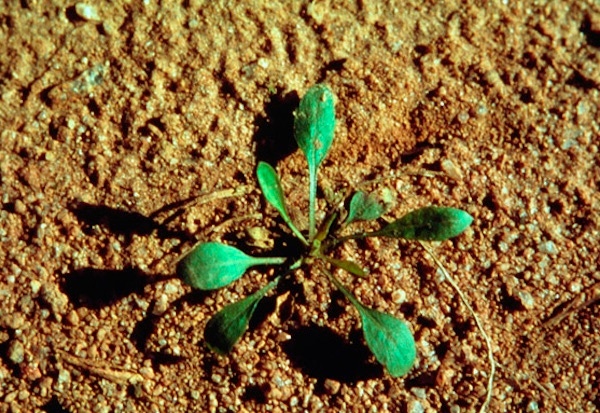March 22, 2016

A mild winter was just right to create conditions for a higher incidence of the marestail weed on farm fields this year, says Travis Legleiter, a Purdue University weed specialist. Farmers need to do what they can to gain control of it early in the planting season, he said.
“As we go into spring, I think farmers need to be aware of how much marestail is in their fields,” said Legleiter. “I think this spring we may have more marestail, or marestail that’s further advanced in its growth stage, than we’ve had in the past.”
An effective burndown is the best method to control a marestail infestation, said Legleiter, who advises farmers to use herbicides other than 2,4-D and glyphosate.
Identification is key
Along with marestail, farmers should be aware of giant ragweed, Palmer amaranth and waterhemp.
Identification is key to fighting weed infestation. Farmers who need help identifying weeds can send samples to the Purdue Plant and Pest Diagnostic Laboratory. Cost is $11 a sample for Indiana residents and $22 for non-Indiana residents. Other resources for identification are available in publications from the Purdue Extension Education Store at www.edustore.purdue.edu, including the 2016 Weed Control Guide for Ohio, Indiana and Illinois (search for product code WS-16-W) and Palmer Amaranth Biology, Identification and Management (product code WS-51).
Legleiter advises farmers to scout fields regularly and clean equipment, especially when moving between fields with heavy weed populations but also between fields with small or no weed populations.
“We consider combines to be one of the biggest contributors to the spread of seeds,” Legleiter said. “Everything a farmer can do to keep the weeds spreading from one field to the next is going to be beneficial.”
Apply herbicides early
When using herbicides, Legleiter stresses the importance of applying them while the weeds are 2-4 inches tall for optimal effectiveness. Not only is it important to apply early, but also applying a mixture of herbicides with different sites of action is best for resistance management. Sites of action refer to where, on a molecular level, the herbicide affects the weed. Many herbicides have the same site of action, so it is important that farmers use herbicides that have different sites of action. Farmers can use the Herbicide Classification chart to aid in choosing different sites of actions herbicides.
“If you’re using the same site of action multiple times in a year, year after year, you’re just selecting for the weeds that are resistant to that herbicide,” Legleiter said. “When you use multiple sites of action, where one might fail the other can pick up.”
Legleiter recommends using as many herbicides with different action sites as possible and not applying those with the same sites of action more than three times in a year.
You May Also Like




